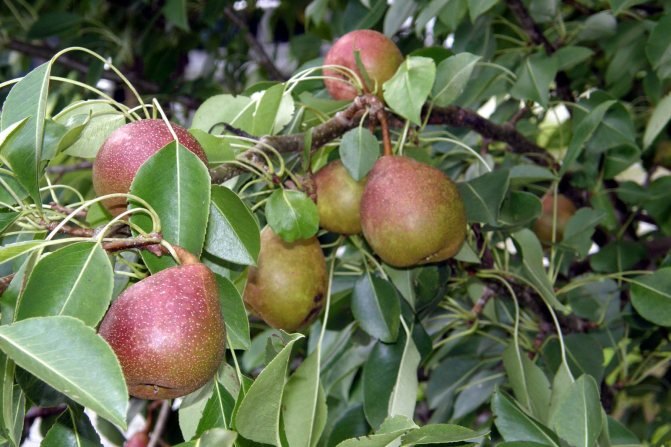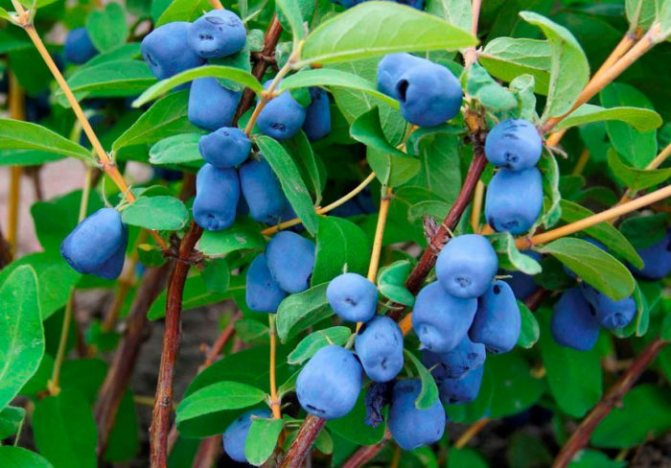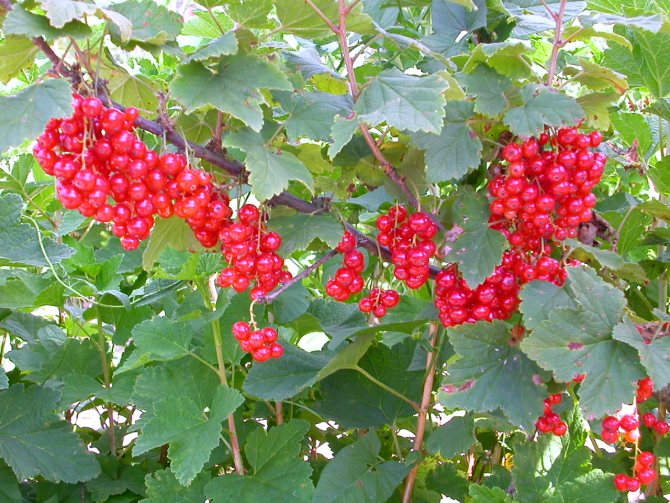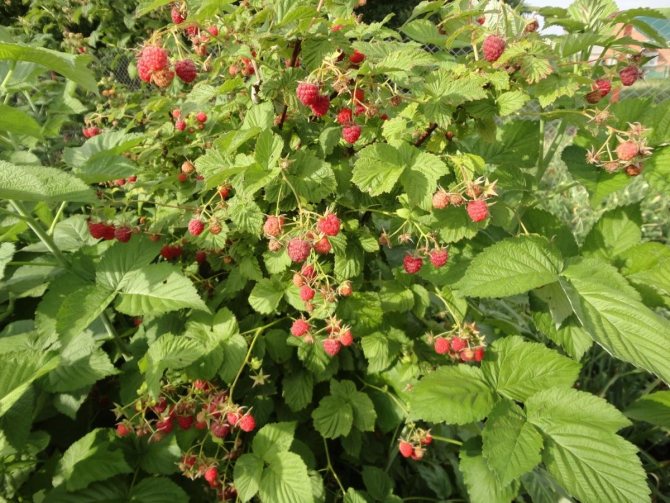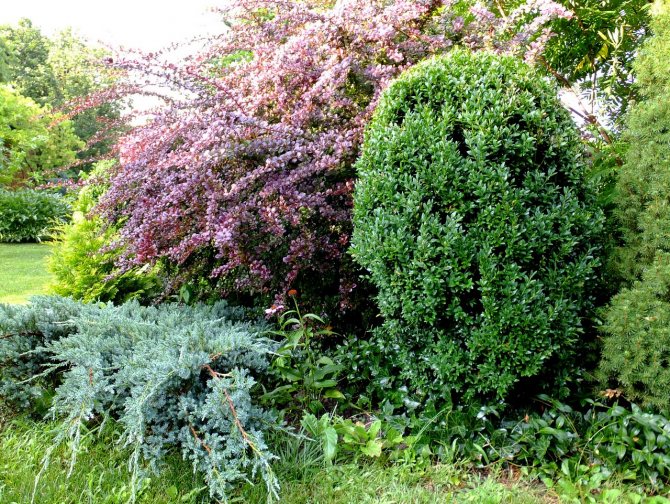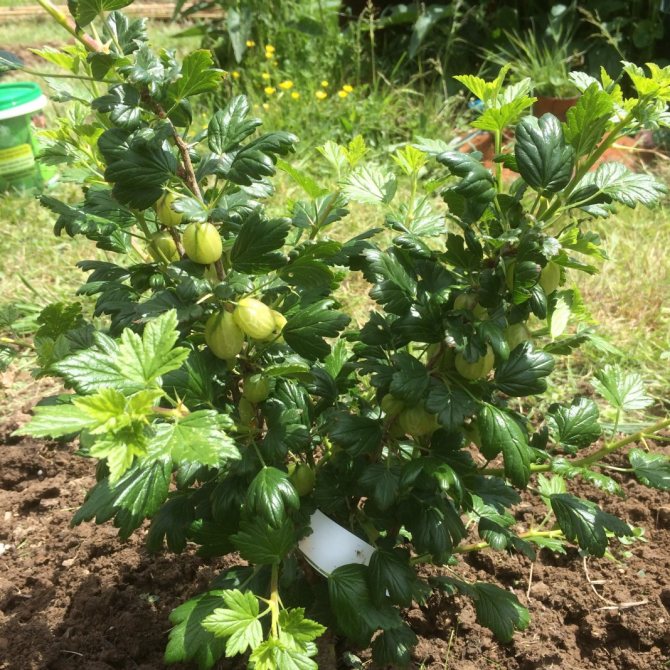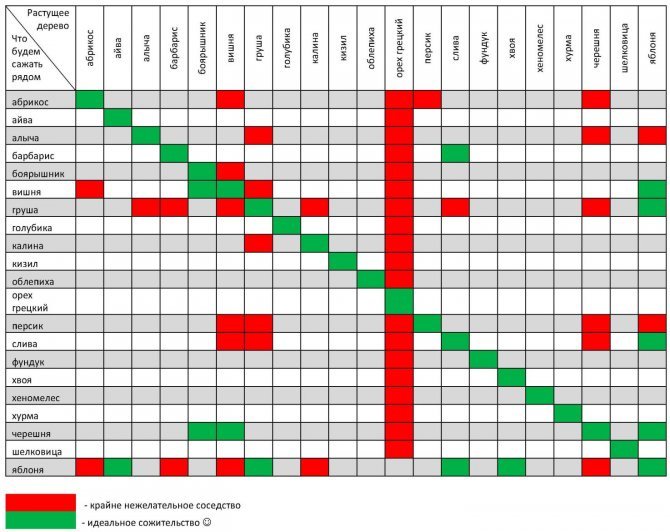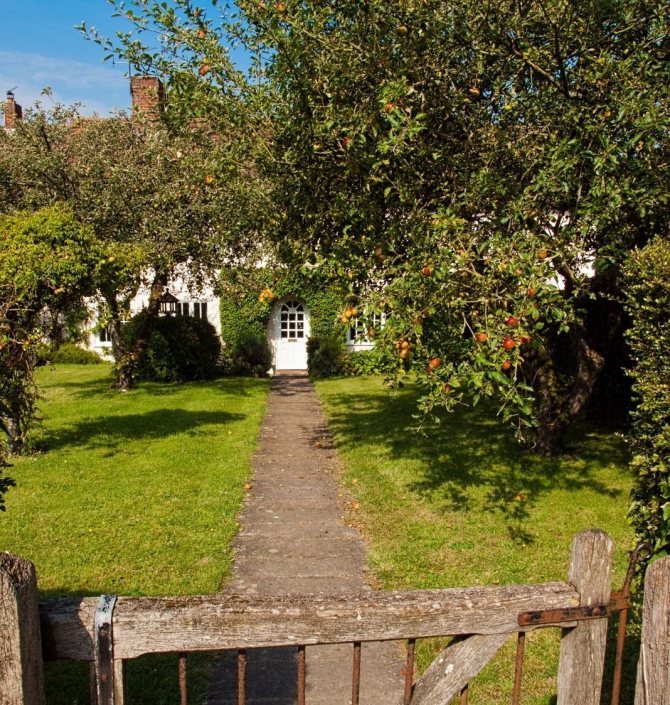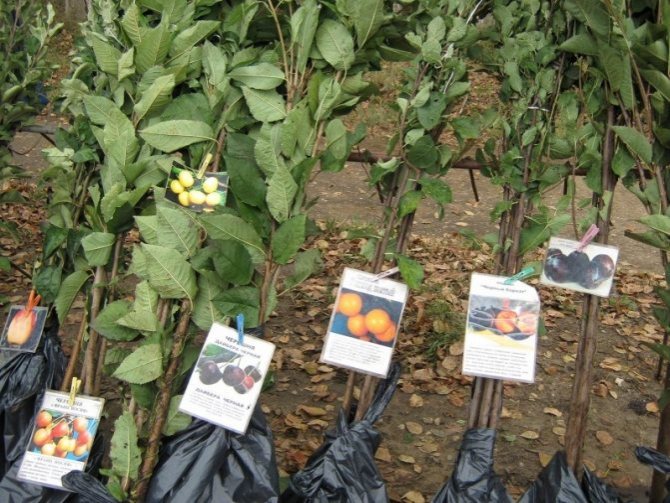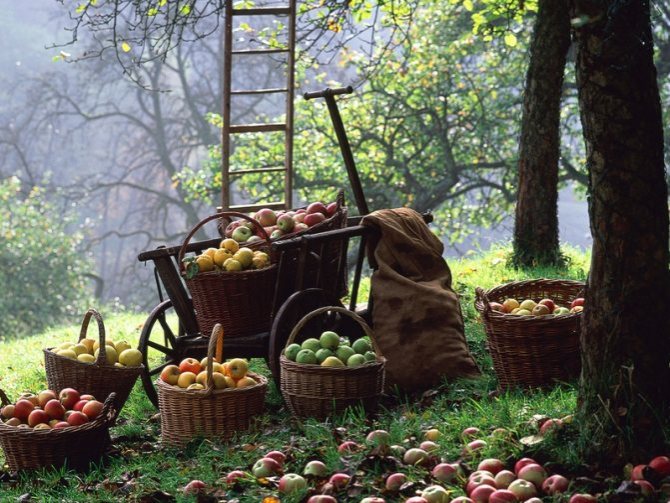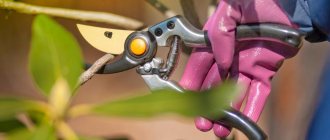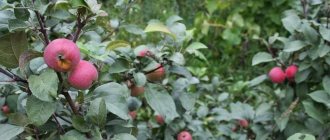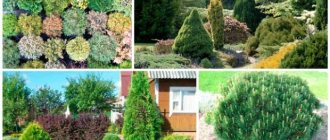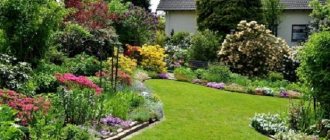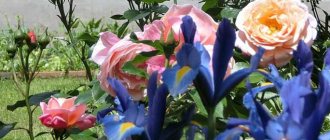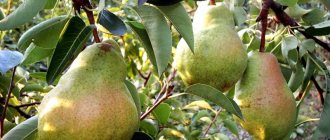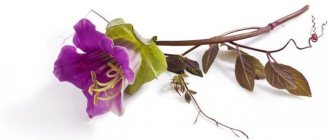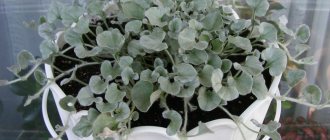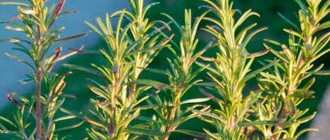Planting trees and shrubs
It all starts with planting trees and shrubs. Information about compatibility and incompatibility of cultures is needed here. First of all, you need to sketch out a detailed plan for the location of plant objects.
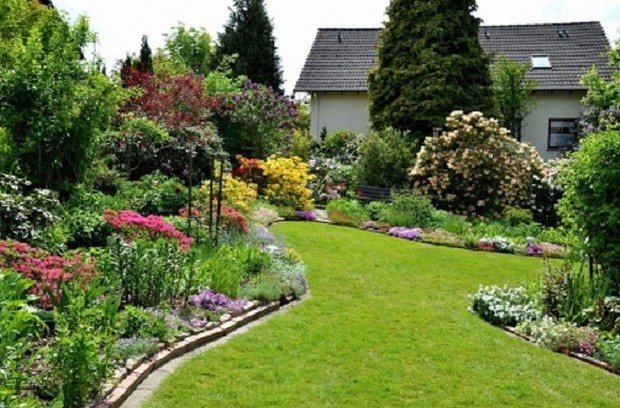
Garden of trees and shrubs
How to plan a fruit tree garden
You can turn to landscape designers for help, or you can create a garden design yourself. Currently, there are different programs on the computer, with the help of which you can create a real "masterpiece" and accurately plan every meter of free land. In addition, all the subtleties of the positioning and planting process will be taken into account. For example, the requirements of each individual culture.
The first thing you need to decide on is the types of plants for planting. It is important to take into account the peculiarities of the local climate, the structure and composition of the soil, the relief of the land. The most convenient shape for planning is a classic rectangle. The entire site is divided into separate sections.
Attention! This method is good for owners of elongated and narrow sections.
Another shape of the site is round. The main plantings are flower beds, lawns, patio. All lines should be smooth and without sharp corners. They can be hidden behind climbing crops.
A square plot is a great option for beginners. It is the easiest way to translate the project into reality. The diagonal layout idea helps to visually resize the lot. If necessary, you can visually increase the width or length.
When there is a complex relief in the garden, for example, ponds, stones, a free type will do. However, there are some peculiarities here too.
Distance between trees when planting fruit trees
When planting garden trees and shrubs, the distance between them must be taken into account. It should not be placed close, because this can lead to a lack of moisture, nutrients, microelements.
This is taken into account when deciding to plant seedlings. Knowing the size of an adult shrub or tree helps in determining the size of the distance. For example, apricot, pear, apple tree grow quite tall. The distance between the seedlings should be at least 5 m.For dwarf varieties, 3 m will be enough.All 2 m is left between the columnar apple trees.
Planting apple trees: distance between trees
The planting scheme for an apple crop differs depending on the area of cultivation. For example, in the south of the Russian Federation, the distance between seedlings is left more than required. The same is true between the rows. The landing pattern is called in this case checkerboard. This is due to the peculiarities of the soil in these areas.
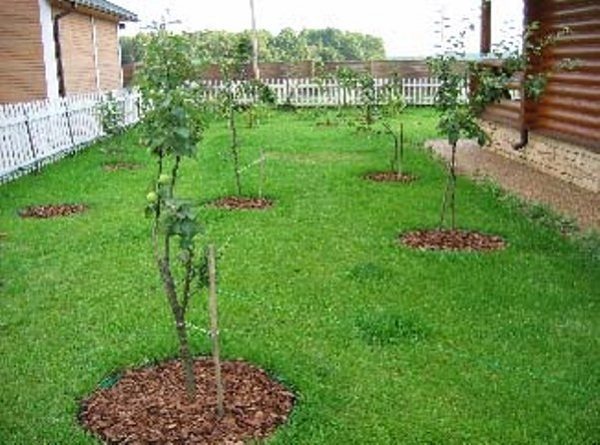

Chess planting of apple trees
Between dwarf species, they maintain a distance of up to 3 m and are planted in one row. The row spacing is from 4 to 5 m. When planting semi-dwarf tree varieties, 4.5 m are left between the rows and seedlings. Between tall ones - 5 m.
On a note: Apple trees are sometimes used as a "hedge" by planting trees along the fence in a row. If it is necessary to form arched "structures", up to 2 m of free space is left between the dwarf apple trees.
Medium apple trees require a 5 m distance between seedlings, and especially high ones - 6 m.To make a rational arrangement of trees, you need to choose an option in the form of chess. The distance decreases in this case:
- for dwarf varieties between seedlings and rows, respectively, 1.5 and 3 m;
- for semi-dwarf - 3.5 and 3 m;
- for tall people - 4.5 and 5 m.
It should be borne in mind that this arrangement requires more maintenance.
Plants that scare off pests
Raspberries are among those plants that often suffer from the invasion of insect pests, so the gardener will have to make every effort to protect the future harvest. The radical solution to the problem is the use of insecticidal chemicals, but if you want organic berries, then it is worth investigating the issue of beneficial crop compatibility in this regard.
It is best to plant raspberry bushes next to fragrant plants that can repel the pest.... For example, they will grow well next to a red elderberry, the smell of which is well noticeable within a radius of several meters from the plantings. They also proved to be quite good marigolds, garlic, fern, coriander and celery, often found not only near raspberries, but also near blackberries or strawberries.
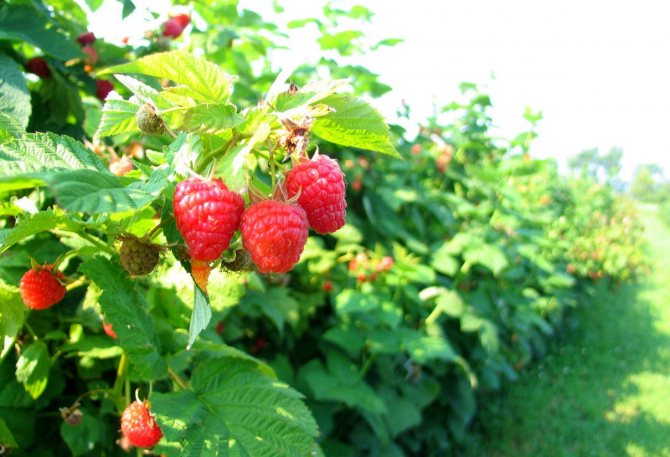

Plants that are compatible with each other mutually support each other throughout the entire period of growth and development, therefore, if you have not yet planted raspberries on your site, the issue of a competent neighborhood should be given increased attention. When combined with responsible follow-up, this action will help you maximize your yield and protect you from unnecessary problems.
Fertilizer for fruit tree seedlings
Young seedlings need additional nutrition with minerals and organics. The most important trace elements are phosphorus, potassium, calcium. Sulfur, iron, and manganese are of secondary importance. The best option is complex fertilizer.
Diseases of fruit trees, diseases of garden fruit trees
Thus, nitrogen is present in bird droppings, manure and compost. These substances are diluted with water in a ratio of 1:10. In the spring, it is good to combine organic fertilizing with ammonium nitrate. After 4 years, additional nutrition with phosphorus and potassium is gradually introduced.
Fruit trees can be fed with these mixtures during the formation of ovaries, as well as in the spring. Superphosphate is an excellent fertilizer containing phosphoric acid. Suitable for all fruit crops.
Important! For insufficiently strengthened seedlings, fertilizers with nitrogen in the composition are not used. This will only reduce their resistance to low temperatures, as it helps to extend the growth period.
Planting shrubs
Separately, it is worth dealing with the planting of shrubs. It also has its own peculiarities.
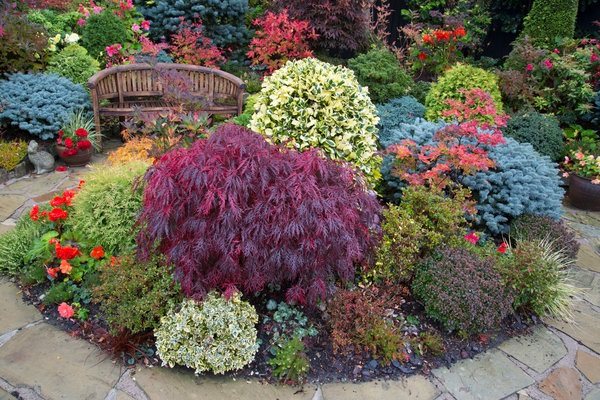

Shrubs in the garden
Seat selection
When arranging shrubs, such requirements as sufficient illumination of the site with sunlight, the level of moisture in the soil and its composition are taken into account.
To get the value of the comfortable distance between the bushes, add the height of two adjacent bushes and divide by 3.
What should be considered when selecting neighbors?
In your own garden or vegetable garden, you can grow cherries in the neighborhood of any other plants, if you place them at a safe distance from each other.
The choice of a place for plants is based on several criteria:
- soil composition;
- depth of groundwater;
- illumination;
- blown by winds;
- influence on neighboring cultures.
Trees are planted nearby, the roots of which lie at different depths so that they do not compete for nutrients. It is important that the crowns of neighboring trees do not overlap light-loving cherries. Also take into account which trees can serve as pollinators for neighboring ones.
Fruit tree compatibility
Excellent compatibility of fruit trees is obtained when arranged in groups of the same species, that is, apple trees are planted with apple trees, plums with plums, etc.Most often, there is a lack of land in the country, so it is necessary to carefully study the compatibility of trees and shrubs.
The most non-capricious plant is the apple tree. It has a strong root system and gets along well with other plantings. Raspberry bushes should be planted next to a young apple tree. They have a "loosening" effect on the soil. It will not hurt to plant a maple tree and several deciduous or coniferous crops nearby.
Interesting: Ash-leaved maple protects the apple tree from pests.
Pears are for the most part sterile and are arranged in pairs. The most harmful plant for them is juniper. Plums, cherries, cherries get along well together. It is recommended to place maple and black elderberry next to plums. The latter helps the drain from aphid damage.
The grapes grow well with lemongrass (Chinese), as well as pears and some fruit and berry crops (cherry, raspberry, apple). Does not tolerate the neighborhood with hazel, quince.
Sweet cherry has a strong root system. It is not planted with weaker crops. Does not withstand location next to apple and pear crops.
Sea buckthorn is the best "friend" of fruit bushes and trees. You just need to remember that its root system grows very quickly and can "hammer" every plant in the neighborhood, therefore, they put artificial limiters made of slate, roofing material.
Currant does not tolerate the neighborhood of other varieties of its culture. Red is planted in single groups, and black currant prefers honeysuckle as a neighbor. Gooseberries are planted next to plums, red currants, pears.
Raspberries are very aggressive towards other horticultural crops due to their strong root system. Able to "survive" closely located plants. It is usually planted in 2 rows. Do not grow gooseberries and currants next to raspberries.
Helpful information: Among the trees, planting herbs such as lemon balm, parsley, anise, coriander, thyme, tarragon are useful. Their aroma repels pests.
Neighborhood table fruit trees and shrubs table
For ease of memorization, information on the compatibility and incompatibility of fruit crops is presented in the table.


Neighborhood of fruit shrubs and crops (table)
Legend:
- green - good compatibility;
- white - neutral;
- red - poor compatibility.
What fruit trees can not be planted nearby
The following crops should not be placed next to each other:
- which have a tendency to the same diseases and damage by the same pests;
- growing at different rates;
- emitting chemicals into the soil;
- with a spreading crown;
- the same need for watering.
Attention: Conifers serve as an excellent decoration for a garden plot, but remember that you should not plant them next to fruit trees, because the branches of the first will obscure the light of the sun.
Incompatible cultures should be placed on opposite sides. It is not recommended to grow bird cherry, hazel, hawthorn in the garden, as they have a depressing effect on other plants.
Berry bushes compatibility
Black and golden currant varieties get along well with fruit and berry crops. Good compatibility in red currants and gooseberries, as well as in grapes and raspberries. Sea buckthorn is suitable for all fruiting shrubs.
What to plant currants with
First of all, do not plant nearby bushes of black and red currants. Raspberries also do not need to be planted in the neighborhood. This berry bush will reclaim a large territory too quickly, preventing the currants from fully developing.
Gooseberries grow well next to red currants. But in the vicinity of black currants, both crops may die, since they have a common parasite - the moth.
You may be interested in: Planting cherries in the fall
Tree propagation
Trees can be propagated in 2 ways:
- through the air layers;
- using cuttings.
Propagation of fruit trees by air layers
For this type of reproduction, only healthy branches are selected. Preferred are those that grow on the southeast or west side of the tree. The breeding technology is as follows:
- In early March, a polyethylene sleeve with a diameter of up to 12 cm and a length of up to 40 cm is put on a branch.
- At the very base of the branch, the edge of the sleeve is wrapped with electrical tape.
- In the last days of March, two cuts are made in a circle with a knife on the bark to the very middle, leaving a gap of 2 cm between the cuts.
- The resulting ring is removed from the bark and the place is wrapped with insulating tape.
- Above the cuts, 4-5 cuts are made longitudinally with a length of 10 to 15 cm and a depth of 1 mm.
- The sleeve is filled with boiled water in an amount of 1.5-2 liters and the sleeve is tied on top. In this state, the branch needs to be kept for a couple of days.
- After that, an enriched mixture of leaf earth and rotted manure is introduced into the sleeve in a ratio of 1: 2. Tamp it tightly. All air should escape from the sleeve.
- A layer of mulch 2 cm thick is placed on top and the edge is tied. Around the middle of autumn, the first roots appear on the branch and it is transplanted separately into the ground. The nutrient mixture is not removed from the sleeve.
- The seedling is taken out of the sleeve and planted in the planting hole. The hole is sprinkled with soil, watering is carried out.
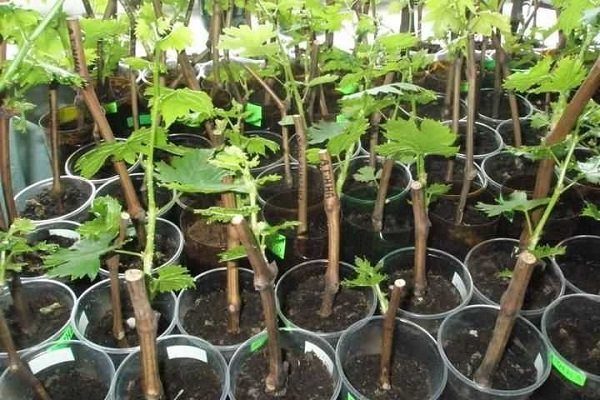

Landing layering
At this stage, a support is required to which the seedling is tied.
Propagation of trees by cuttings
Trees can also propagate by cuttings. For this, very young shoots, which still have green bark, are suitable. The cut from the side of the cut is placed in water. Ideal conditions for disembarkation are a cold greenhouse with a depth of 30 to 35 cm.
A sod mixture and sand are placed at the bottom. Sprinkle with coarse sand on top. The cuttings are placed almost at the surface of the earth, no deeper than 1.5 cm. They put supports for the cuttings.
Important! The distance between the rows should be about 10 cm, between the cuttings at least 4 cm.
After the cuttings are planted, watering is carried out through a sieve and covered with a frame on top, creating partial shade. The temperature in the greenhouse should be from +20 to +25 degrees. Cuttings planted in this way take root after 8-12 days. When shoots form, provide access to fresh air, opening the greenhouse. When they go into intensive growth, remove the frame. At the end of summer, cuttings are planted in open ground. Before the onset of frost, hilling is carried out.
A beautiful garden starts with a project. When creating, it is necessary to take into account many features: the space between trees and shrubs, compatibility and incompatibility of different species. It is important to follow the rules of planting and care. And then the beautiful garden will become a reality.

